Exceptional Day of Shooting - 03 Jul 2024
Today was almost a carbon copy of Monday morning when I came here to Pt. Mouillee to bird and photograph. Winds were blowing from the SW at 5-15 mph and skies were partly cloudy. However, it was much more humid this morning and temps (70F) felt much warmer than on Monday. I would take the same route, as well: Walpatich Unit to Middle Causeway to Cell 3 and back down Middle Causeway to car.
I arrived at about 7:30 am and biked around the west side of the Walpatich to the north end dike. Swamp Sparrows and Marsh Wrens were doing their thing, and once again I was unable to coax any into the open.
As the marsh opened up along the NE corner of the Walpatich the same assortment of Lesser Yellowlegs, Killdeer, and Least Sandpipers greeted me. Only two Sandhill Cranes were present this morning among the several dozen Mallard, Canada Geese and Great Egrets. With no birds close to shore I rode around to the east edge of the Walpatich and started working my way south back toward the Middle Causeway.
One of the Trumpeter Swans were trumpeting in the Lautenschlager Unit to the east.
I made sure to set the clocks on both Sony a1's so that I could do some comparison of digiscoping vs. prime photography (one Sony a1+40mm f/2.5 on the Swarovski STX85 and 25-60X vs. Sony a1 + 600 mm f/4 GM OSS + 1.4 TC). A pair of Least Sandpipers were nearby so I put the scope on them.
Compare w/ the Sony a1 and 600/4.
A posing Lesser Yellowlegs about 30' made for a great comparison of the two techniques. First, the 600/4 combo,
followed by the digiscoping rig.
A direct comparison of cropped images from the digiscoping rig
and the 600/4 combo
revealed surprisingly equal quality between the systems. Depth of field differences aside (you can see more bokeh in the bottom image) image quality was quite excellent with both. Note however that digiscoping quality will fall off quicker with distance compared to the 600/4 combo.
The Black-necked Stilt was still around this morning. It was hanging out in the middle of the Unit near the large dead tree. I took a few digiscoped images.
Nearby a Great Egret was glowing in the morning Sun against the dark backdrop of the water. The Sony a1 + 600/4 combo produced tack-sharp images
While the Sony a1 and digiscoping combo produced similar results (slightly less sharp).
The Sandhill Cranes were also hanging out in the middle of Unit, but I managed a long distance shot w/ the 600/4.
I continued back to the Middle Causeway and headed east toward the Banana Unit and Cell 3. The wind was picking up enough that I had to ride w/o my hat on my head. Birds were absent so I headed past the small raft of Ruddy Ducks, Redhead and Lesser Scaup in Cell 4 and continued directly to Cell 3.
Parking the bike next to the dredge pipes I walked over the pipes to the north end of the mudflats and made my way out to the water's edge in Cell 3. As I hiked across the softening mudflats I spotted a flock of large shorebirds circling the north end of the shoreline: Short-billed Dowitchers - 16 of them!
They settled down behind some cattails growing in the mud so I approached slowly and stood among the cattails so I could get some pics from about 50' away.
They would flush and land at the extreme northwest end of Cell 3 among a half-dozen Lesser Yellowlegs, Killdeer and Least Sandpipers. Three Spotted Sandpipers could be seen on the dried mudflats at the extreme north end of the Cell.
As I waited for the dowitchers to return I spent some time trying to keep the tripod / scope from sinking in the mud. Luckily, I wasn't sinking. But, as I stood peering over the cattails I managed to see some fly-by Forster's Terns, Caspian Terns, and this Black Tern that came in fast over the phragmites lining the west shoreline. With a tiny bass in its mouth it banked and headed directly toward me where I was waiting w/ the 600/4 combo.
A few moments later it was followed by a juvenile Black Tern.
A fly-by Caspian Tern was carrying a small sunfish. I'm assuming that it was carrying it to be released into deeper water...
I scoped the south and east ends of the Cell 3 shoreline and counted another half-dozen Short-billed Dowitchers scattered among Lesser and Greater Yellowlegs and more Killdeer. I did not see the Stilt Sandpiper from Monday. A large roost of mostly Forster's Terns were nearby and contained several Common Terns, Black Terns and Caspian Terns.
Just as I was getting ready to head out a small flock of Short-billed Dowitchers flew in and landed at the water's edge just 30' away. I couldn't get any closer to them due to the soft mud but decided to try and photograph them at ground level. I place the 600/4 combo on the mud and used the flip-up viewfinder to focus on the birds as I knelt and managed some nice captures. I had to rely on autofocus and found that heat shimmer was playing havoc with critical focusing, but managed to still get dozens of sharp captures at ground level.
A Lesser Yellowlegs even joined the fun.
Having enough fun myself I gathered the gear and started back to the bike. I paused just long enough when I heard the squeaking of another Black Tern flying by and grabbed a few pics.
I'd return to the Middle Causeway, pausing just long enough to photograph a backlit Black Tern flying along the west shoreline of Cell 4.
I'd head back to the car to call it a morning. I stopped just long enough to capture a Forster's Tern foraging near shore of the Humphries Unit. I managed to catch it going into a dive, but couldn't keep up with it as it hit water.
Just before reaching the Mouillee Creek parking lot I heard an Indigo Bunting singing nearby and got some nice pics as it sang atop a stalk of phragmites.
I think it almost lost a tonsil during this song.
Pte. Mouillee SGA (permit required Sep 1-Dec 15), Monroe, Michigan, US
Jul 3, 2024 7:32 AM - 10:43 AM
Protocol: Traveling
8.0 mile(s)
Checklist Comments: Breezy, warm humid 70F, ptly cloudy
50 species
Canada Goose (Branta canadensis) 16
Trumpeter Swan (Cygnus buccinator) 1 Heard in Lautenschlager Until trumpeting.
Wood Duck (Aix sponsa) 2
Blue-winged Teal (Spatula discors) 6
Northern Shoveler (Spatula clypeata) 1
Gadwall (Mareca strepera) 2
Mallard (Anas platyrhynchos) 16
Green-winged Teal (Anas crecca) 1
Redhead (Aythya americana) 4
Lesser Scaup (Aythya affinis) 4
Common Goldeneye (Bucephala clangula) 1
Ruddy Duck (Oxyura jamaicensis) 6
Pied-billed Grebe (Podilymbus podiceps) 2
American Coot (Fulica americana) 2
Black-necked Stilt (Himantopus mexicanus) 1 Continuing in Walpatich Unit. Photos.
Killdeer (Charadrius vociferus) 12
Semipalmated Plover (Charadrius semipalmatus) 2 One in Walpatich and other in Cell 3
Short-billed Dowitcher (Limnodromus griseus) 23
Spotted Sandpiper (Actitis macularius) 3
Lesser Yellowlegs (Tringa flavipes) 14
Greater Yellowlegs (Tringa melanoleuca) 1
Least Sandpiper (Calidris minutilla) 22
Bonaparte's Gull (Chroicocephalus philadelphia) 1
Ring-billed Gull (Larus delawarensis) 2
Herring Gull (Larus argentatus) 1
Caspian Tern (Hydroprogne caspia) 12
Black Tern (Chlidonias niger) 7
Forster's Tern (Sterna forsteri) 86
Common Tern (Sterna hirundo) 2
Double-crested Cormorant (Nannopterum auritum) 2
Green Heron (Butorides virescens) 1
Great Egret (Ardea alba) 7
Great Blue Heron (Ardea herodias) 4
Turkey Vulture (Cathartes aura) 1
Belted Kingfisher (Megaceryle alcyon) 1
Northern Flicker (Colaptes auratus) 1
Willow Flycatcher (Empidonax traillii) 1
Bank Swallow (Riparia riparia) 6
Tree Swallow (Tachycineta bicolor) 13
Barn Swallow (Hirundo rustica) 6
Marsh Wren (Cistothorus palustris) 3
European Starling (Sturnus vulgaris) 28
American Goldfinch (Spinus tristis) 2
Song Sparrow (Melospiza melodia) 3
Swamp Sparrow (Melospiza georgiana) 6
Red-winged Blackbird (Agelaius phoeniceus) 12
Brown-headed Cowbird (Molothrus ater) 2
Common Grackle (Quiscalus quiscula) 2
Common Yellowthroat (Geothlypis trichas) 1
Indigo Bunting (Passerina cyanea) 2
View this checklist online at https://ebird.org/checklist/S1
This report was generated automatically by eBird v3 (https://ebird.org/home)
Jul 3, 2024 7:32 AM - 10:43 AM
Protocol: Traveling
8.0 mile(s)
Checklist Comments: Breezy, warm humid 70F, ptly cloudy
50 species
Canada Goose (Branta canadensis) 16
Trumpeter Swan (Cygnus buccinator) 1 Heard in Lautenschlager Until trumpeting.
Wood Duck (Aix sponsa) 2
Blue-winged Teal (Spatula discors) 6
Northern Shoveler (Spatula clypeata) 1
Gadwall (Mareca strepera) 2
Mallard (Anas platyrhynchos) 16
Green-winged Teal (Anas crecca) 1
Redhead (Aythya americana) 4
Lesser Scaup (Aythya affinis) 4
Common Goldeneye (Bucephala clangula) 1
Ruddy Duck (Oxyura jamaicensis) 6
Pied-billed Grebe (Podilymbus podiceps) 2
American Coot (Fulica americana) 2
Black-necked Stilt (Himantopus mexicanus) 1 Continuing in Walpatich Unit. Photos.
Killdeer (Charadrius vociferus) 12
Semipalmated Plover (Charadrius semipalmatus) 2 One in Walpatich and other in Cell 3
Short-billed Dowitcher (Limnodromus griseus) 23
Spotted Sandpiper (Actitis macularius) 3
Lesser Yellowlegs (Tringa flavipes) 14
Greater Yellowlegs (Tringa melanoleuca) 1
Least Sandpiper (Calidris minutilla) 22
Bonaparte's Gull (Chroicocephalus philadelphia) 1
Ring-billed Gull (Larus delawarensis) 2
Herring Gull (Larus argentatus) 1
Caspian Tern (Hydroprogne caspia) 12
Black Tern (Chlidonias niger) 7
Forster's Tern (Sterna forsteri) 86
Common Tern (Sterna hirundo) 2
Double-crested Cormorant (Nannopterum auritum) 2
Green Heron (Butorides virescens) 1
Great Egret (Ardea alba) 7
Great Blue Heron (Ardea herodias) 4
Turkey Vulture (Cathartes aura) 1
Belted Kingfisher (Megaceryle alcyon) 1
Northern Flicker (Colaptes auratus) 1
Willow Flycatcher (Empidonax traillii) 1
Bank Swallow (Riparia riparia) 6
Tree Swallow (Tachycineta bicolor) 13
Barn Swallow (Hirundo rustica) 6
Marsh Wren (Cistothorus palustris) 3
European Starling (Sturnus vulgaris) 28
American Goldfinch (Spinus tristis) 2
Song Sparrow (Melospiza melodia) 3
Swamp Sparrow (Melospiza georgiana) 6
Red-winged Blackbird (Agelaius phoeniceus) 12
Brown-headed Cowbird (Molothrus ater) 2
Common Grackle (Quiscalus quiscula) 2
Common Yellowthroat (Geothlypis trichas) 1
Indigo Bunting (Passerina cyanea) 2
View this checklist online at https://ebird.org/checklist/S1
This report was generated automatically by eBird v3 (https://ebird.org/home)

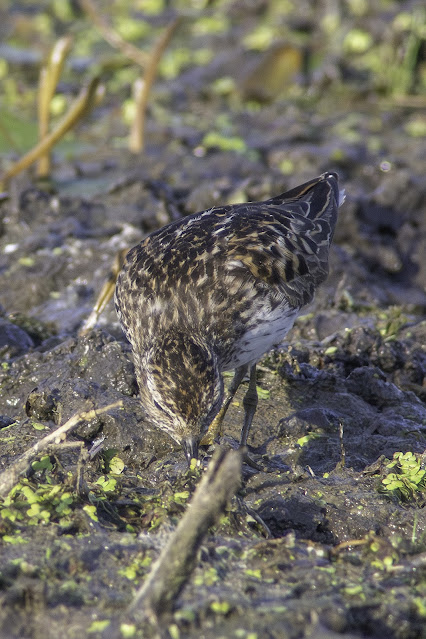
















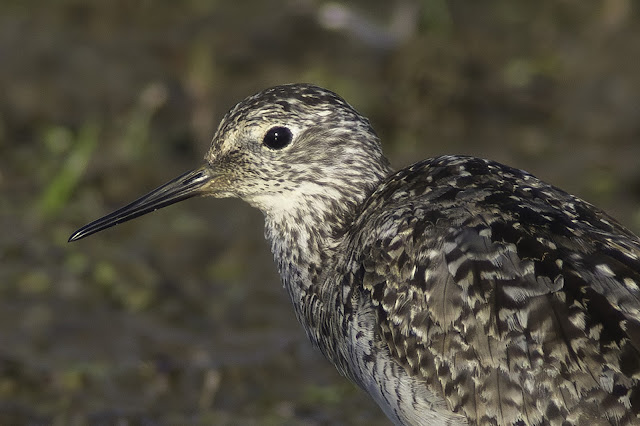



























































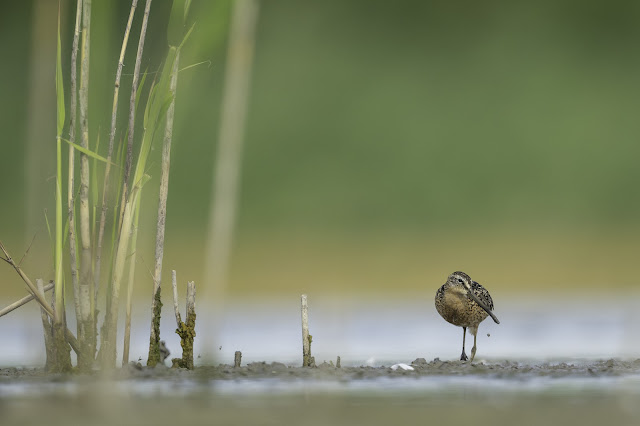






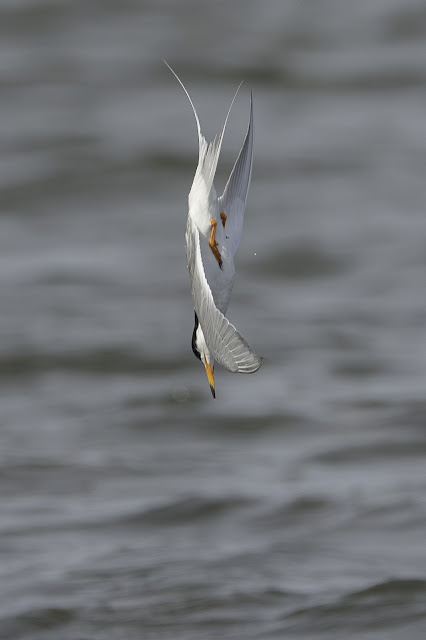


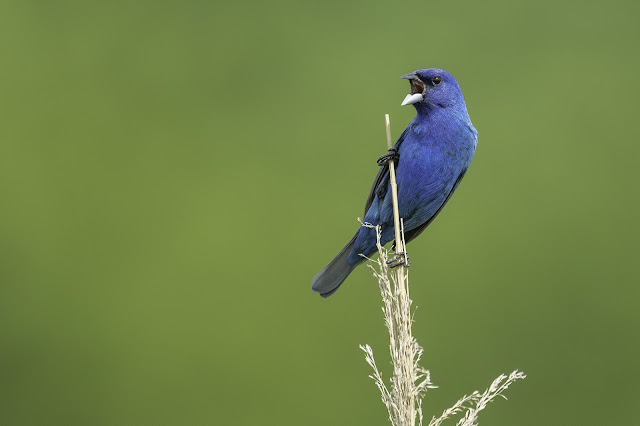






Comments
Post a Comment
Please leave a comment. I will try to respond ASAP.